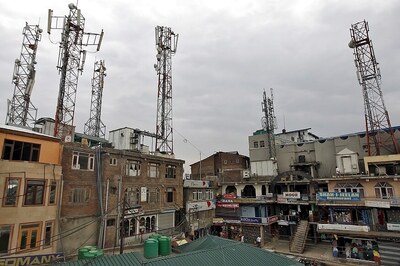
views
In a development that could bring some cheer to the Keralites, it has been found that the number of new cases of HIV has been declining in the last three years, despite the fact that the number of patients tested has been increasing each year.
According to the figures from the Kerala State AIDS Control Society, the number of persons diagnosed with HIV in its 163 Integrated Counselling and Testing Centres (ICTC) in the state has shown a decline in all the categories.
The total number of males diagnosed with HIV-positive went down from 1,540 in 2009 to 1,402 in 2010 to 1,314 in 2011. The number of pregnant women diagnosed with HIV has seen a steeper decline.
While the number stood at 946 in 2009, it went to 845 in 2010, and further declined to 759 in 2011. There is also a marginal decline in the number of HIV-positive deliveries, from 90 in 2009 to 72 in 2010 to 69 in 2011.
It must be noted that the decline comes even while the number of persons diagnosed has been increasing through the same period.
While the number of general clients tested for HIV was 1,32,304 in 2009, about 62,000 more people were diagnosed in 2010. In 2011, the number of persons further increased by 61,000 to 2,55,495.
In the same period, the number of pregnant women tested for HIV increased from 1,07,709 in 2009 to 1,13,852 in 2010. In 2011, it further increased by about 23,000 tests to 1,37,275.
The number of deaths reported in the USHUS-ART Centres, for Anti Retroviral Treatment for HIV-positive persons has also been on a steady decline since 2009. While the number stood at 277 in 2009, it went down to 245 in 2010 and then to 217 in 2011.
But the number of patients started on ART has seen a slight increase in 2011. While it declined from 1,678 to 1,386 in 2010, in 2011 it has increased to 1,403.
Authorities with the Health Department have stated that apart from a few pockets, the number of new HIV cases has been on a decline in the state.
“There are a few border areas like Palakkad where the number is increasing, but otherwise the overall figures on new HIV cases has been on a decline in the state.
“The mass mobilisation from the late 1990s have been chiefly responsible for the control of the disease. In the mid 90s, health experts, including publications like Lancet, had predicted that Kerala would be highly prone to the disease largely because of the huge migrant population of the state.
“But owing to the mass mobilisation in that period, we were able to control the disease in about 10 years. The disease peaked in the late 90s and early 2000s. But of late, the number of reports are on a decline,” said Rajiv Sadanandan, Health Secretary and former National Consultant of the National AIDS Control Organisation.



















Comments
0 comment